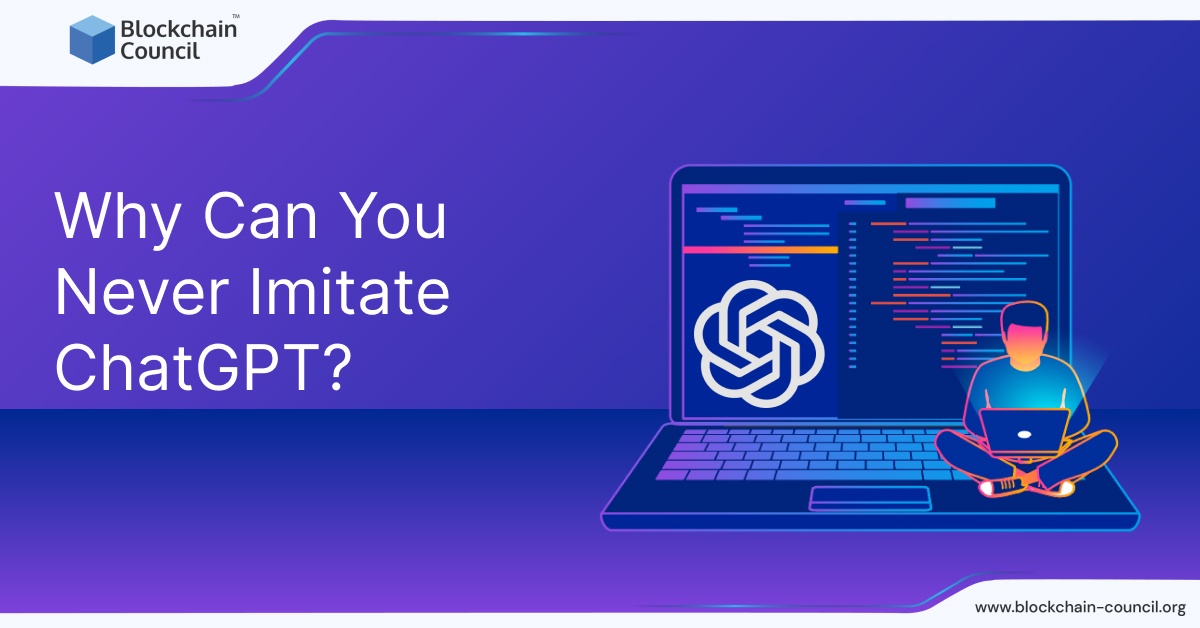In recent years, artificial intelligence (AI) has made remarkable advancements in various fields, and natural language processing is no exception. Since the debut of ChatGPT, an AI language model developed by OpenAI, people have been infatuated with the LLM chatbot. There are users, doomers, developers, and other AI businesses attempting to construct their own version. While OpenAI's approach is closed source, several open source models have given developers optimism of creating something similar to the best chatbot on the market.
One of the growing low-cost techniques for improving an open-source language model like LLaMa, Alpaca, or Self-Instruct is to fine-tune it on outputs from proprietary systems like ChatGPT, which are stronger models. It may appear to be an effective technique to replicate and strengthen the weaker model's skills to match the stronger model, but it fails.
While some may attempt to imitate ChatGPT, it is important to understand the fundamental reasons why replicating its capabilities is an insurmountable task. If you want to have in-depth knowledge about ChatGPT, you can opt for online ChatGPT certification programs offered by renowned institutions like Blockchain Council.
In this article, we will explore the unique features and underlying technologies that make ChatGPT truly unparalleled in its domain.
Massive Scale and Training Data
One of the primary reasons why imitating ChatGPT is practically impossible is the massive scale of its architecture and training data. ChatGPT is built upon the GPT-3.5 model, which contains a staggering 175 billion parameters. These parameters are fine-tuned using a diverse range of data from the internet, resulting in an expansive understanding of language patterns, context, and knowledge.
The training data for ChatGPT spans millions of web pages, books, articles, and other textual sources, allowing the model to learn from a vast array of information. It is this extensive exposure to diverse content that enables ChatGPT to generate accurate and coherent responses across various topics.
Contextual Understanding
ChatGPT's contextual understanding is a result of its sophisticated architecture and the application of advanced techniques in natural language processing. By employing transformers, attention mechanisms, and deep neural networks, ChatGPT is capable of capturing the intricate details and subtleties present in a conversation. It can discern the underlying meaning behind words, interpret the context in which they are used, and accurately gauge the speaker's intentions.
This contextual awareness enables ChatGPT to produce responses that align with the ongoing conversation, demonstrating a level of coherence and relevance that sets it apart from traditional chatbots. The ability to understand context is not limited to isolated phrases or sentences but extends to a broader understanding of the entire conversation, allowing ChatGPT to generate human-like and contextually appropriate replies. This remarkable capability makes it exceedingly challenging to replicate or imitate the intricate interplay between language and context that ChatGPT effortlessly exhibits.
Language Generation and Creativity
The language generation capabilities of ChatGPT are nothing short of remarkable. Unlike rule-based chatbots that follow pre-determined patterns or templates, ChatGPT generates text dynamically based on the input it receives. It can produce coherent, contextually relevant, and grammatically accurate responses that mimic human conversation.
Furthermore, ChatGPT exhibits a degree of creativity in its responses. It can generate original content, answer questions, provide explanations, and even engage in storytelling. This creative aspect makes it extremely challenging to replicate the unique flair and originality that ChatGPT brings to its conversations.
Continuous Learning and Improvement
Continuous learning and improvement are at the core of ChatGPT's development. The model actively collects feedback from its interactions with users, creating a feedback loop that enables it to learn from real-world conversations. OpenAI utilizes reinforcement learning techniques to analyze this feedback and fine-tune the model's responses, addressing any limitations or errors it may encounter. This iterative process allows ChatGPT to adapt and improve its performance, enhancing its ability to generate more accurate, coherent, and contextually appropriate responses.
By constantly evolving and incorporating new knowledge, ChatGPT remains at the forefront of AI language models, making it a moving target for those attempting to imitate its capabilities. The continuous learning and improvement of ChatGPT contribute to its unrivaled proficiency and make replication a formidable challenge.
Ethical Considerations and Responsible AI
Ethical considerations and responsible AI practices are at the forefront of ChatGPT's development and deployment. OpenAI recognizes the potential risks associated with AI technology and has taken proactive measures to address them. ChatGPT is designed with safeguards in place to prevent harmful behavior, misinformation dissemination, and the generation of inappropriate content.
OpenAI places a high priority on the responsible use of AI, ensuring that ChatGPT adheres to ethical guidelines and aligns with societal norms and values. By promoting transparency, accountability, and fairness, ChatGPT aims to foster trust and maintain the integrity of AI applications. These ethical considerations and responsible AI practices play a vital role in ensuring that ChatGPT is a force for positive impact and that its replication encompasses the same ethical standards.
Conclusion
ChatGPT, with its vast scale, extensive training data, contextual understanding, language generation abilities, continuous learning, and ethical framework, stands as a testament to the remarkable advancements in AI language models. Its capabilities are the result of cutting-edge technologies and years of research and development.
While some may attempt to imitate ChatGPT, replicating its unparalleled brilliance remains an insurmountable challenge. It is crucial to recognize the value that ChatGPT brings to various applications, including customer service, content generation, and language translation.
Rather than attempting to imitate ChatGPT, it is more beneficial to explore the ways in which this technology can be leveraged to augment human capabilities, enhance productivity, and unlock new possibilities in a wide range of domains.
If you want to pursue your career as a certified chatbot expert, then Blockchain Council can be the right choice for you. Check out Blockchain Council’s website for the recently introduced Chatbot certification and AI courses, available at an economical price.


No comments yet